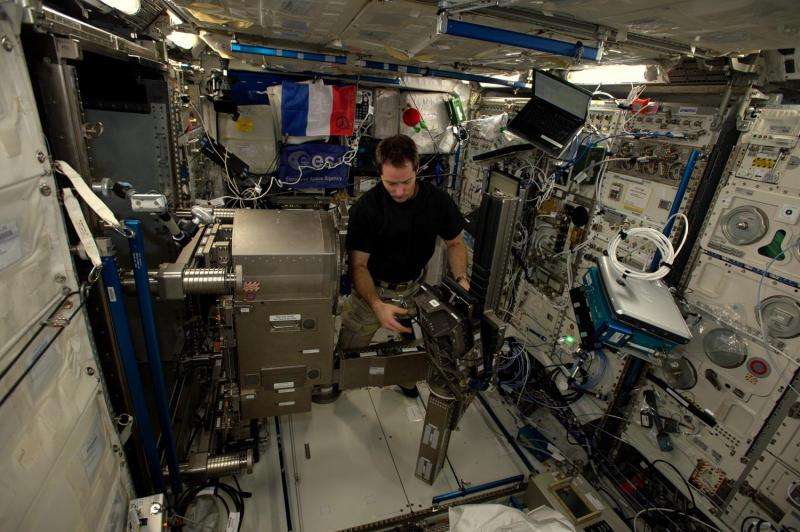Image: The Muscle Atrophy Research and Exercise System for astronauts

The Muscle Atrophy Research and Exercise System, or MARES for short, is a three-in-one muscle-measurement machine on the International Space Station to monitor astronauts' muscles as they work out.
Muscle strength drops during spaceflight and researchers need to know why this happens in order to prepare for long missions and safe space tourism. MARES is an exercise bench that offers detailed information about how muscles behave in space.
Looking at muscle contraction at a single moment gives little information but MARES provides a full overview of muscle speed and force as an elbow or knee joint bends.
Our bodies are amazing machines that perform wonderful feats daily without us even noticing. Hold a glass in your hand and fill it with water and your arm muscles will automatically hold the glass steady and stable despite the changing weight as it fills.
MARES can chart this fine motor control as well as give a precise overview of muscle torque and speed. Astronauts move their joints to follow a graph or dot on a screen as a motor generates counterforce.
This week, ESA astronaut Thomas Pesquet is installing the machine in Europe's Columbus space laboratory and he will be the first test subject for researchers on Earth. Thomas' fellow ESA astronauts Andreas Mogensen, Samantha Cristoforetti and Tim Peake, tested the machine to make sure it works correctly ready for use.
Provided by European Space Agency

















